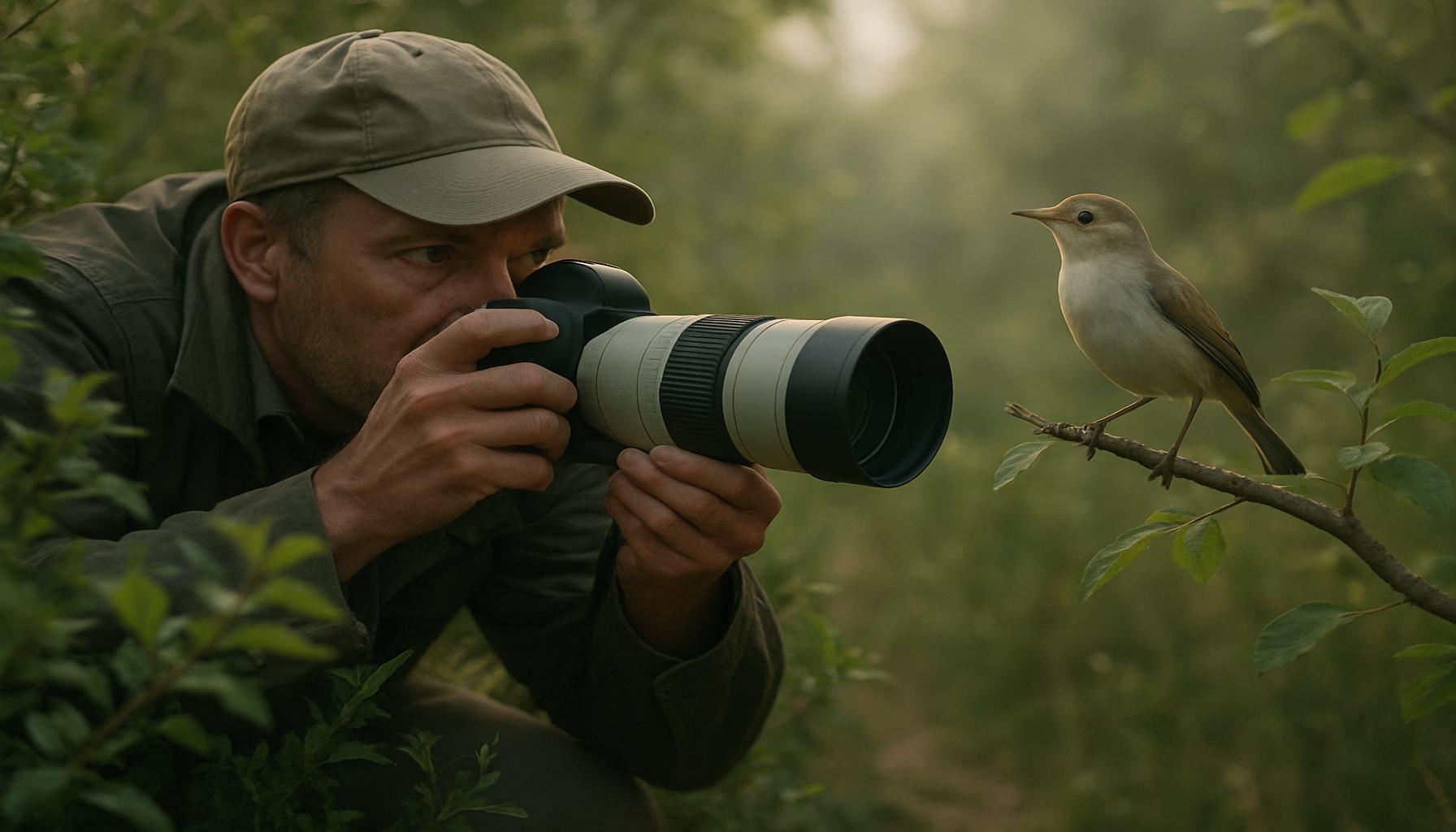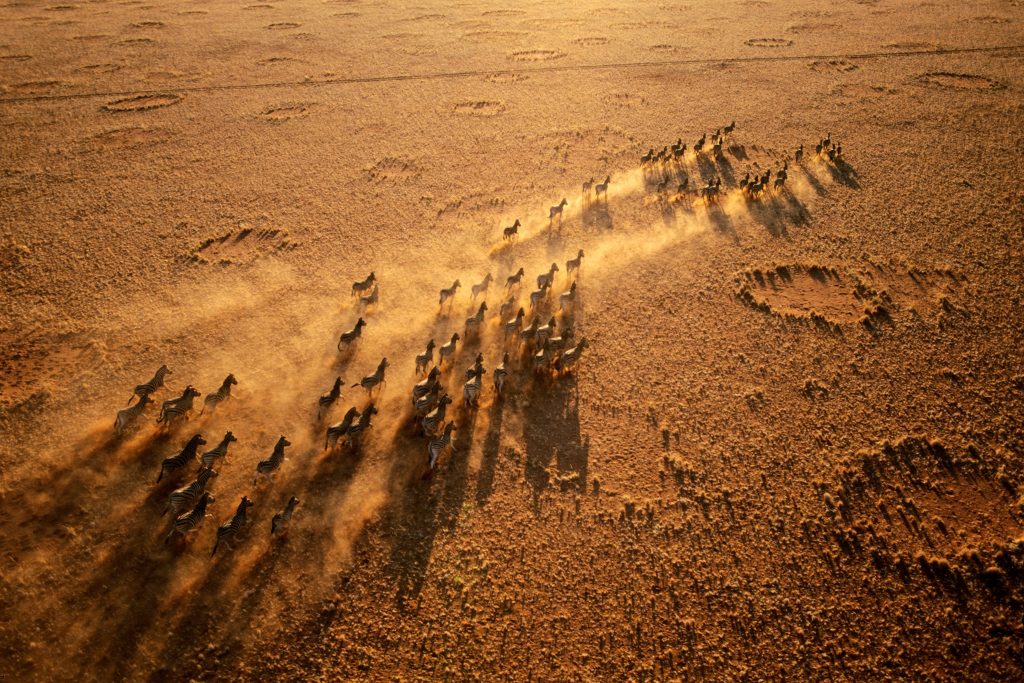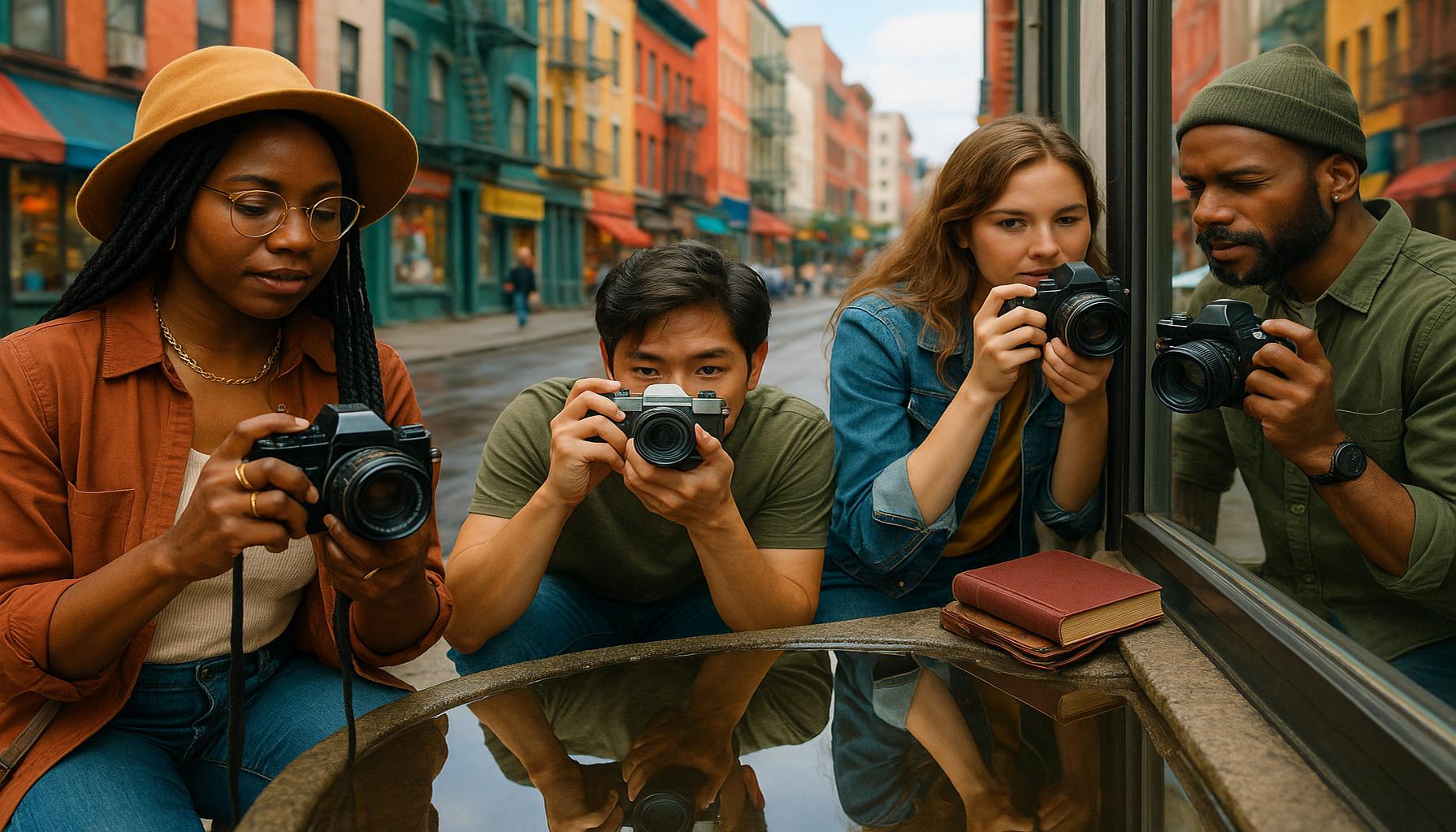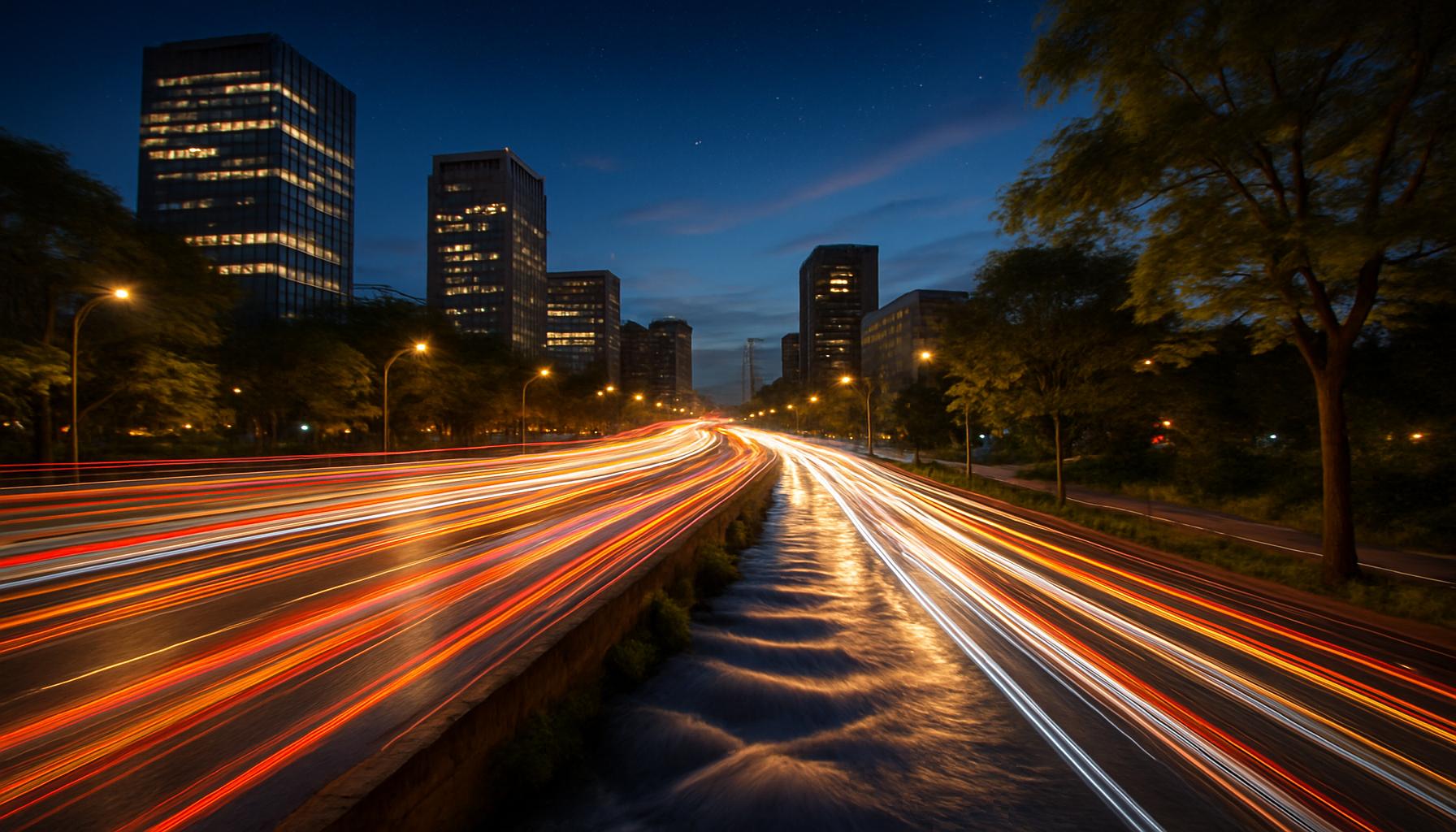The challenges of nature photography: ethics and responsibility in capturing wildlife

The Intricacies of Nature Photography
Nature photography is a captivating form of art that immerses us in the beauty of the wild. However, it comes with a set of profound challenges that extend beyond the lens. Understanding the ethical implications and responsibilities involved is essential for every aspiring photographer.
Key Considerations
When capturing wildlife, photographers face several pivotal challenges, including:
- Respect for Wildlife: Animals are not subjects; they are sentient beings with their own lives and habitats. This means that photographers must approach their subjects with care, ensuring that their presence does not disturb or alter natural behaviors. For instance, getting too close to nesting birds can lead to abandonment of eggs or chicks. Observing from a distance and using long lenses can help preserve the integrity of wildlife.
- Environmental Impact: The act of photographing can disrupt ecosystems and habitats, especially in sensitive areas such as wetlands or national parks. Photographers should always practice the principle of “leave no trace,” ensuring that their activities do not leave debris or disturb flora and fauna. For example, trampling on delicate vegetation while trying to get the perfect shot can lead to longer-term ecological damage.
- Responsible Use of Equipment: The choice of technology can influence how and where photographers operate. Using drones for aerial shots, while capturing breathtaking views, may also introduce stress to wildlife below. Photographers need to consider the implications of their equipment choices, opting for methods that minimize disturbance.
These elements shape the responsibilities photographers hold towards nature and the ethical dilemmas they must navigate.
A Growing Awareness
As the conversation around conservation grows louder in the United States, the role of photographers takes on new importance. The public is becoming more aware of issues like:
- Invasive Techniques: Certain methods, such as baiting animals to achieve better shots, can put stress on wildlife, leading to unintended consequences. This practice can alter animals’ natural feeding habits and make them dependent on human provisions.
- Commercial Exploitation: Wildlife photography can sometimes exploit animals, leading to ethical concerns. For example, capturing images of endangered species in their threatened habitats for profit may worsen their situation while raising concerns about the motivations behind such photography.
- Sharing Platforms: The power to influence public perception through social media raises questions about responsible sharing. Photographers must reflect on the potential impact of their images and strive to promote awareness rather than adventure or sensationalism.
Engaging with these challenges requires thoughtfulness and intent, pushing photographers to think critically about their role in preserving nature. By fostering a deeper understanding of these complexities, photographers not only contribute to the art form but also become advocates for nature conservation, enhancing the dialogue surrounding environmental issues in the communities they engage with.

EXPLORE MORE: Click here to uncover your creativity
Navigating the Complex Landscape of Wildlife Capture
Nature photography is not merely a hobby but a powerful medium that shapes our perception of wildlife and the environment. With its increasing popularity, photographers are often at the forefront of connecting the public to nature. However, the challenges encountered in this field go well beyond technical skill; they delve deeply into ethical considerations and responsibilities that can significantly impact wildlife and their habitats. Addressing these concerns is critical for photographers who aim to contribute positively to conservation efforts.
Understanding Human-Wildlife Interaction
One of the foremost challenges in nature photography lies in understanding human-wildlife interaction. The presence of a photographer can profoundly affect animal behavior. For example, an animal’s natural instinct to migrate or hunt can be disrupted by human presence, leading to potential harm. To minimize these disturbances, photographers must learn how to observe quietly and responsibly, employing techniques such as:
- Familiarization with Animal Behavior: Understanding the patterns and routines of wildlife allows photographers to position themselves strategically without encroaching upon the animals’ natural space.
- Patience and Waiting: Successful wildlife photography often requires long periods of waiting, where the photographer’s stillness can allow animals to act freely. This approach necessitates a commitment to time and respect.
- Ethical Framing: Photographers should strive to capture the essence of wildlife in its natural state without manipulation or alteration. The aim should always be to depict real moments over staged scenarios.
This understanding emphasizes that every click of the shutter has the potential to resonate far beyond the immediate capture, influencing conservation narratives and public attitudes towards wildlife.
Education as a Tool for Ethical Practice
Equipping oneself with knowledge extends beyond understanding animal behavior; it also involves grappling with broader environmental issues. Aspiring photographers can benefit from studying subjects such as:
- Conservation Biology: Familiarity with ecological principles fosters an appreciation of biodiversity and the delicate balance ecosystems maintain.
- Legal Regulations: Knowledge of local and federal wildlife protection laws ensures that photographers comply with existing regulations, safeguarding wildlife from exploitation.
- Community Engagement: Collaborating with environmental organizations helps photographers remain engaged with conservation efforts, offering opportunities to share their work while supporting critical initiatives.
This educational foundation not only elevates the quality of photography but also reinforces the ethical responsibilities photographers have in their craft. By prioritizing knowledge and understanding, photographers become advocates for wildlife rather than merely observers.
Impacts Beyond the Lens
Moreover, photographers wield significant influence through their visual storytelling. Images capture attention and evoke emotions, but they can also perpetuate misconceptions if not handled thoughtfully. For instance, sensational images of predator-prey dynamics might foster fear and misunderstanding rather than appreciation for the natural world. As stewards of their craft, photographers must strive to present wildlife authentically while fostering a sense of respect and understanding amongst their audience.
In an era where images circulate rapidly on social media platforms, establishing a clear understanding of the challenges of nature photography is not just an individual pursuit; it is a collective obligation. Addressing these concerns lays the groundwork for a more conscious approach to nature photography that seeks to elevate both the craft and the ethical dilemmas inherent in the pursuit of capturing wildlife.
The Role of Ethics in Nature Photography
In the realm of nature photography, ethical considerations are paramount. Photographers must navigate a landscape filled with potential dilemmas that could impact wildlife and their habitats. Adhering to ethical guidelines ensures that the integrity of nature is preserved while also promoting responsible practices within the community. This responsibility not only affects the subjects of photography but also shapes public perception and appreciation for wildlife.
Respecting Wildlife and Their Habitats
One of the key challenges is maintaining a respectful distance from wildlife. Close interactions can disrupt animal behavior and lead to stress. For instance, overexposure to human presence can prompt animals to abandon nests or alter their natural activities. Responsible photographers prioritize the well-being of wildlife by employing techniques such as using telephoto lenses to capture images from a safe distance.
Representation and Authenticity in Work
Another important aspect of ethics is how photographers choose to represent wildlife. The temptation to alter images or create misleading narratives can undermine trust and contribute to misconceptions about animals. Emphasizing authenticity in photography preserves the viewer’s connection with nature. By portraying species in their natural behaviors and habitats, photographers provide a more genuine reflection of the wild, fostering greater understanding and conservation efforts.
Conservation Photography as a Tool for Awareness
Many nature photographers are now embracing the concept of conservation photography, which aims to enhance awareness about environmental issues while showcasing the beauty of wildlife. This framework emphasizes the role of photography in promoting awareness of endangered species and ecological challenges. By documenting these narratives, photographers attract attention to critical conservation efforts, often leveraging their art to inspire change. The challenge lies in creating compelling images that tell a story without compromising ethical standards.
The Impact of Technology on Ethics
Advancements in technology, such as drones and remote cameras, also pose new ethical challenges. While these tools can offer unique perspectives and reduce human disturbance, they can also risk invading the privacy of wildlife. Photographers must weigh the benefits of such technologies against the potential distress it could cause to animals and their habitats. Ultimately, the essence of ethical wildlife photography is a commitment to balance – achieving captivating images while ensuring the safety and well-being of the subjects.By focusing on ethics and responsibility, photographers engage in a profound dialogue about humanity’s relationship with nature. Understanding these challenges not only enables better practices but also encourages deeper appreciation and stewardship for the natural world.
DIVE DEEPER: Click here to discover the evolution of music
Striking a Balance: Access and Conservation
As nature photographers endeavor to capture the beauty of wildlife, one of the prevailing challenges they face is finding the balance between access and conservation. While pursuing the perfect shot, photographers must consider the implications of their presence in delicate ecosystems. This requires a heightened awareness of not just personal effects but broader environmental repercussions.
The Fragility of Ecosystems
Wildlife habitats, particularly in urban or developing areas, are increasingly under threat from habitat loss and climate change. Photographers venturing into these spaces must adhere to the principle of Leave No Trace, which emphasizes minimizing impact on the environment. This includes respecting designated paths, avoiding invasive behaviors, and ensuring that gear does not disturb native flora or fauna. Specific practices can contribute to protecting fragile ecosystems:
- Staying Informed About Protected Areas: Many regions have specific guidelines and zones in place to protect wildlife populations. Photographers should educate themselves about these areas and avoid trespassing into sensitive zones.
- Adhering to Seasonal Restrictions: Many species have mating and nesting seasons that are crucial for their survival. Photographers should plan their shoots accordingly to prevent unnecessary stress to wildlife during these critical periods.
- Supporting Conservation Areas: Engaging with local conservation initiatives and paying park entrance fees may help support preservation efforts, ensuring the continuity of habitats.
By acknowledging the fragility of ecosystems, photographers can engage in more responsible practices that help safeguard wildlife for future generations.
The Role of Technology in Ethical Photography
Modern technology has revolutionized nature photography, offering tools such as drones and remote cameras that can capture stunning wildlife shots without disturbing the subject. However, these advancements also pose ethical dilemmas. The use of drones, for example, can allow photographers to capture images from a distance; yet, they can also cause stress and disorientation for wildlife, particularly birds. It is essential for photographers to weigh the benefits of innovative tools against their potential impact on animal welfare:
- Understanding Drone Regulations: Federal Aviation Administration (FAA) regulations often restrict drone activity in wildlife areas. Familiarity with these rules helps photographers remain compliant while protecting wildlife.
- Maximizing Long-Range Equipment: Using telephoto lenses can fulfill the desire for close-up shots while allowing animals to maintain their natural behavior. This practice exemplifies respect for wildlife while still delivering captivating imagery.
- Utilizing Camera Traps: This method allows for the observation of animals without human presence. Camera traps can yield authentic wildlife behavior that may otherwise remain unseen, promoting an ethical approach to wildlife observation.
Through careful consideration of technological advancements, photographers can continue to push creative boundaries while leading ethically sound practices.
Engaging the Community in Conservation
Nature photographers have an avenue to raise awareness and engage communities by sharing their work and experiences. Photographs can serve as educational tools that spark conversations about wildlife conservation and environmental protection. This outreach can take several effective forms:
- Workshops and Educational Programs: By organizing workshops, photographers can educate others about ethical wildlife photography practices and the importance of conservation efforts.
- Collaborative Exhibitions: Partnering with environmental organizations to showcase photography can create powerful narratives that promote conservation messages and initiatives.
- Social Media Campaigns: Utilizing platforms like Instagram to share impactful stories associated with their photos can foster a community engaged in wildlife conservation efforts.
Shared communities that actively discuss and reflect on the responsibilities of wildlife photography contribute to shaping a culture of awareness and respect for nature as a whole.
DIVE DEEPER: Click here to discover the art of street photography
Conclusion: A Call for Ethical Stewardship in Nature Photography
In the intricate dance of capturing the breathtaking beauty of wildlife, nature photographers are faced with the dual responsibility of being artists and stewards of the environment. The challenges of ethical photography demand a profound acknowledgment of the delicate balance between human presence and the sanctity of natural habitats. As photographers venture into the great outdoors, they must understand that their actions can have lasting consequences on fragile ecosystems and animal behaviors.
From adhering to Leave No Trace principles to embracing remote technology that minimizes disturbance, responsible practices are not merely options; they are essential obligations. Additionally, engaging the community through education and storytelling helps to widen the conversation on wildlife conservation, fostering a culture of respect and advocacy.
The journey of a nature photographer is one that can inspire change and highlight the pressing need for conservation efforts. With each stunning capture, there lies an opportunity not just to showcase the beauty of the natural world, but to ignite curiosity and promote awareness about the ethical implications of wildlife photography. By championing ethical practices and encouraging a sense of responsibility, photographers can ensure that their art contributes positively to the preservation of nature for generations to come. Ultimately, the heart of nature photography lies in the commitment to protect the subjects that inspire their work, creating a harmonious relationship between art and environmental stewardship.


